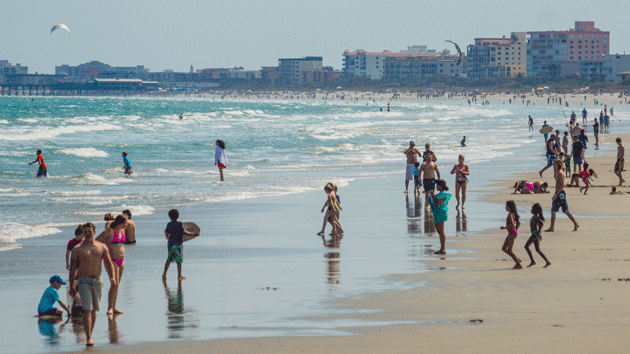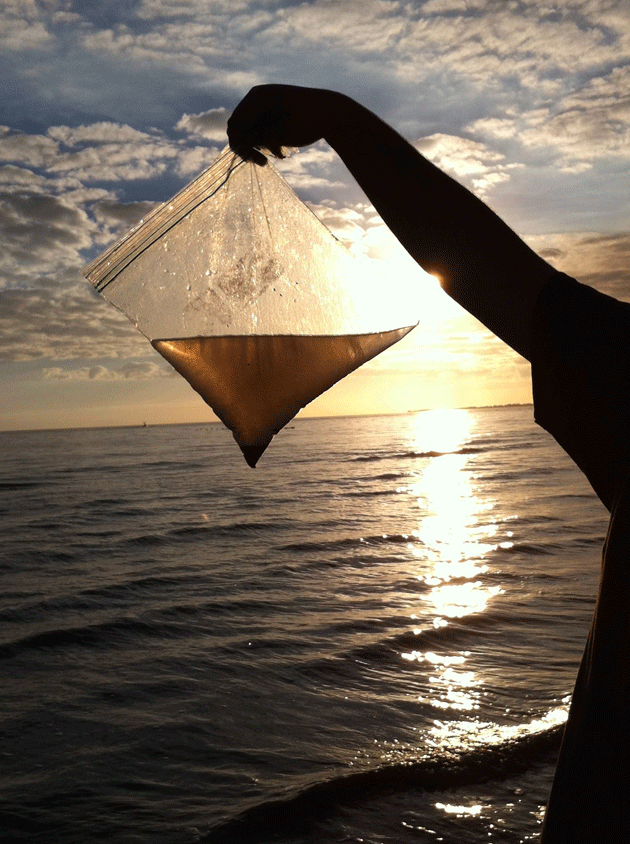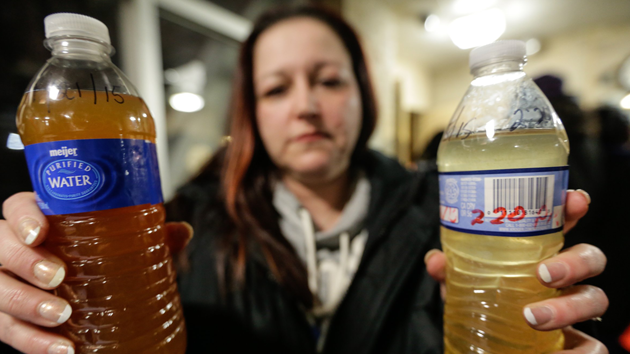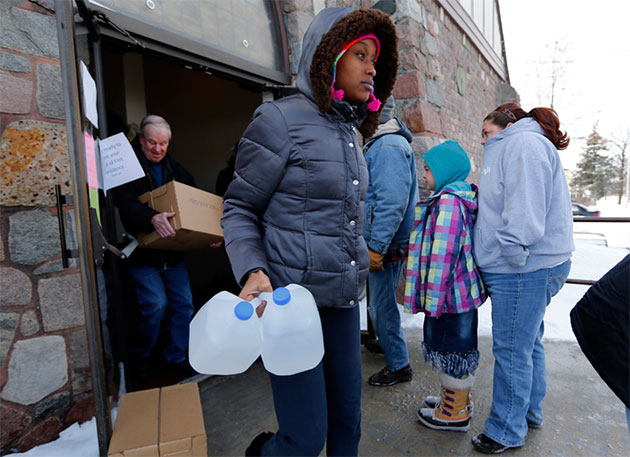
Beachgoers at Jetty Beach Park in Florida in 2013 <a href="https://www.flickr.com/photos/ricardo_mangual/9682717358/in/photolist-fKCswJ-kcAbMu-4p9NAq-5Aokts-cWDgfu-56bAUS-d9ZdEU-cWDf5j-fbDjum-fN63qj-5Ao92h-9JWSn3-5Aouam-6q5eWA-65ZRUx-sKJgj6-EpwvD-4M2KMG-dNFhyX-qzkKpx-4T8Jfb-b41jQt-4p9NEQ-d7yDs3-EbZLqg-7CEbPC-h8vr79-rkuLiC-viGna1-guBDGZ-4E7D6z-cEVvBo-6w2ypC-eiweko-vkPYS-bAuXG4-qJ6Fnv-cRJfaL-7QrYxH-ykSnLZ-d7yDRA-dVyiwx-jJrZCW-9GRdPk-yXXNEb-vfVAuU-iJAet3-bkKWzG-vAgU4Z-iJxAJx">Ricardo Mangual Photography</a>/Flickr
Just in time for tourist season, both of Florida’s coasts are being flooded by dark, polluted water that’s killing ocean creatures and turning away would-be swimmers, fishermen, and other visitors.
Last month was South Florida’s wettest January since 1932. Because of the heavy rain, the water levels in Lake Okeechobee in central Florida rose to about a foot above what’s normal for this season. On top of that, water managers began to pump dirty water from flooded farms into the lake, adding more pollution to a body of water that already contains fertilizers and other chemicals from the state’s cattle and sugar industries. At the same time, officials began to worry that the rising lake waters would put stress on its aging dike, so they decided to drain the lake toward the east and west coasts. Some 70,000 gallons per second flowed into the St. Lucie River and the Caloosahatchee River all the way through to the Gulf of Mexico and the Atlantic Ocean. And as the toxic runoff spreads, it’s threatening sea grasses and oyster beds and adding to harmful algae growth.
Now the tourism industry and small businesses on the coasts are worried they’re going to see their business slump as a result of the pollution. Local politicians are calling on Gov. Rick Scott to declare a state of emergency, and mayors are traveling to Washington, DC, to demand action from Congress and the Army Corps of Engineers. And Floridians are snapping pictures of the polluted water and dead sea creatures and sharing them on social media.

According to David Guest, managing attorney of the Florida branch of the environmental law group Earthjustice, the pollution is not going to end anytime soon. He blames lax regulations, not the unseasonable rain, for the current crisis. “The lake is basically a toilet,” Guest says. Florida’s powerful sugar industry has stood in the way of the state purchasing land south of the lake that could be used to build a waterway to direct dirty water to the Everglades, cleansing it along the way.
According to John H. Campbell, a spokesman for the US Army Corps of Engineers, state and federal officials are unable to divert the polluted water south to the Everglades at the moment. The marshes between the lake and the Everglades are too flooded, and it could be a matter of weeks or even months before the water levels come down. In the meantime, the polluted water will keep being diverted to the coasts, where Florida’s tourism industry lies. “We really don’t have any other options,” Campbell says. “That’s all we can do.”













